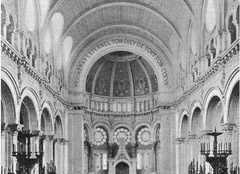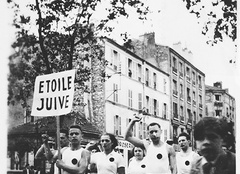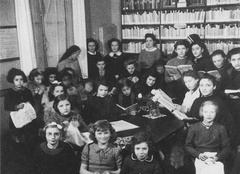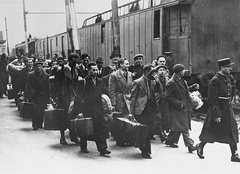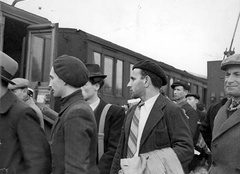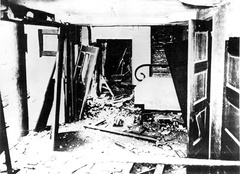Paris
Pronounced “Pahr-EE”
A small Jewish community lived in Paris as early as 582 CE and the city established a Jewish quarter in 1119. However, over the next centuries this community faced numerous instances of discrimination, persecution and violence. Jews were massacred after the First Crusade was declared in 1095. In the 1200s Jews were required to wear a yellow badge and faced high taxes that left them impoverished. After recovering from two previous expulsions in 1182 and 1306, the Jewish community was again banned from the city in 1394 and would not be allowed to return for 300 years.
It was not until the 1700s that Jews began to resettle in Paris. Following the French Revolution of 1789-1790, the approximately 500 Jews who lived in the city received full rights as citizens. The Jewish population continued to grow, reaching roughly 40,000 by the end of the 1800s. Throughout the century Jewish residents of Paris made numerous contributions to the arts, science and politics, including actress Sarah Bernhardt, sociologist Émile Durkheim and humans rights lawyer Adolphe Crémieux.
The late 1800s also saw the rise of anti-Jewish prejudices across Europe. More and more Jewish immigrants began to arrive in Paris as they fled conflict and antisemitic persecution in eastern Europe. In 1894 French-Jewish military officer Alfred Dreyfus was falsely accused of treason. The ensuing Dreyfus Affair led to the founding of the modern Zionist movement, whose followers fought for the creation of a Jewish state.
During World War I (1914-1918) nearly 13,000 Jewish immigrants joined the French Foreign Legion, allowing them to fight for France although they did not have French citizenship. After the war immigrants from central and eastern Europe, North Africa, Greece and Turkey continued to arrive in Paris. Survivor Sylvia Bassat was of Italian and Egyptian heritage, while Survivor Rose Rosenthal’s parents came from Poland.
In the early 1900s Jewish artists such as Marc Chagall and Amedeo Modigliani contributed to the city’s thriving arts scene. Jewish politician Léon Blum was twice elected the Prime Minister of France in the 1930s. Still, a current of antisemitism remained, growing stronger as fascist parties gained power across Europe.
About 150,000 Jews lived in Paris when World War II began in September 1939. In June 1940 the German military occupied the city. The French government passed a Jewish Statute that restricted the rights of French Jews and prohibited Jews from working in the government or in positions such as lawyers, doctors and teachers. Survivor Rose Rosenthal remembered that her parents were required to post “a big sign on the window of the store” they owned in a poor Jewish neighborhood marking them as “Juives” or “Jews.”
Survivor Michel Windland’s father—a Jewish immigrant from Poland who had joined the French Foreign Legion—was arrested in 1940 and spent two years in a French concentration camp before being deported to Auschwitz. In June 1942 Jews were required to wear a yellow badge on their clothing. The next month more than 13,000 Jews were arrested and detained under inhumane conditions in the Vélodrome d’Hiver sports arena, including 13-year-old Windland. Windland later recalled it was “one of the worst nightmarish scenes that I can remember.” While he managed to escape, the vast majority of detainees were ultimately sent on cattle cars to Auschwitz and other Nazi killing centers.
The Jewish Combat Organization (OJC) formed in 1942 to resist the Nazis. Other groups such as the Children’s Aid Society (OSE) worked to save Jewish lives by placing children in hiding. Windland and his younger brother survived the war with a Christian family and Survivor Sylvia Bassat was taken into a Catholic orphanage. Still, in total more than 37,000 Jews were arrested in Paris and deported to killing centers before Allied forced liberated the city in August 1944.
In 2016 the Jewish population of France numbered roughly 500,000. However, from 2000 to 2015 approximately 20,000 Jews emigrated to Israel in the wake of resurgent antisemitism and increasingly violent attacks.
Paris: Photographs & Artifacts
-
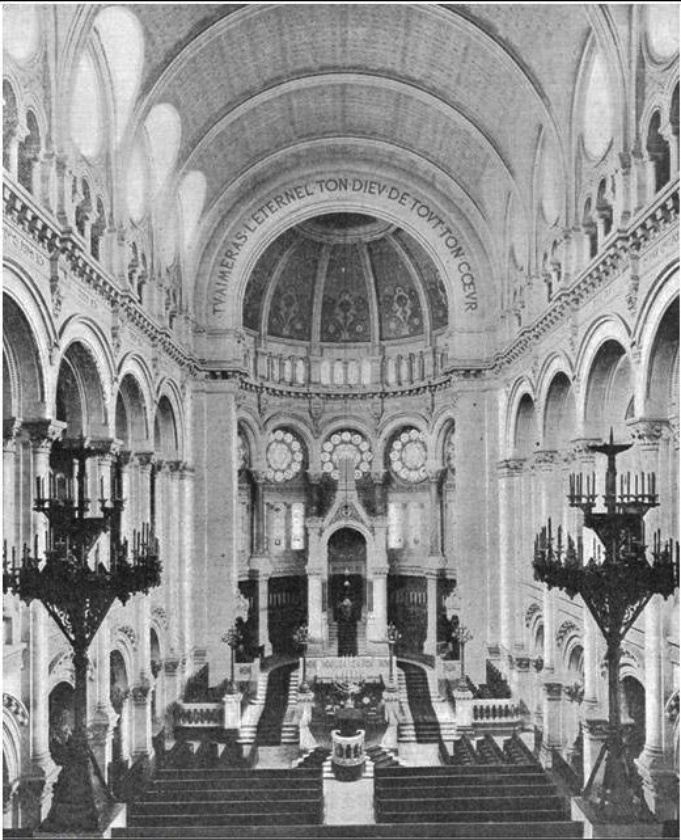 The Great Synagogue of Paris was built in 1874 on the Rue de La Victoire. Credit: Wikimedia Commons / Public Domain (PD-1996)
The Great Synagogue of Paris was built in 1874 on the Rue de La Victoire. Credit: Wikimedia Commons / Public Domain (PD-1996) -
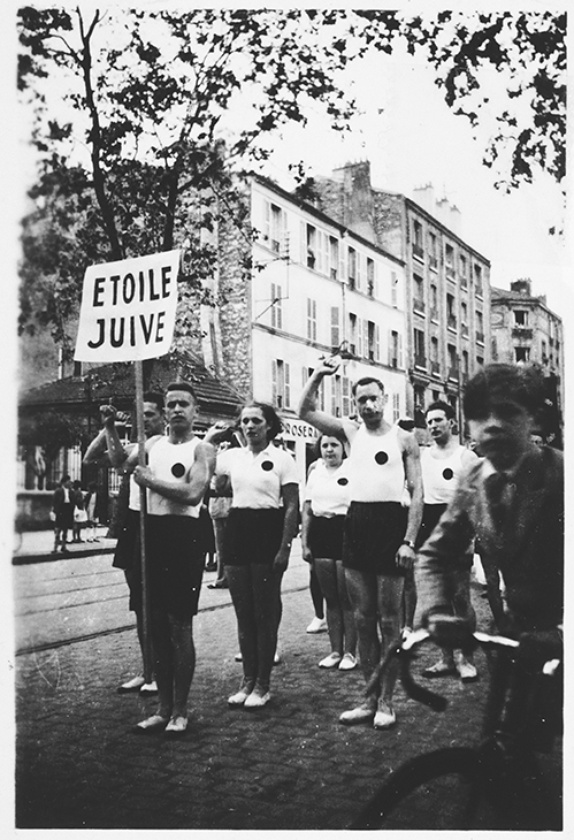 Members of the Jewish sports club, Etoile Juive, salute during a parade through Paris, ca. 1933-1939. Credit: United States Holocaust Memorial Museum, courtesy of Moszek Brycman
Members of the Jewish sports club, Etoile Juive, salute during a parade through Paris, ca. 1933-1939. Credit: United States Holocaust Memorial Museum, courtesy of Moszek Brycman -
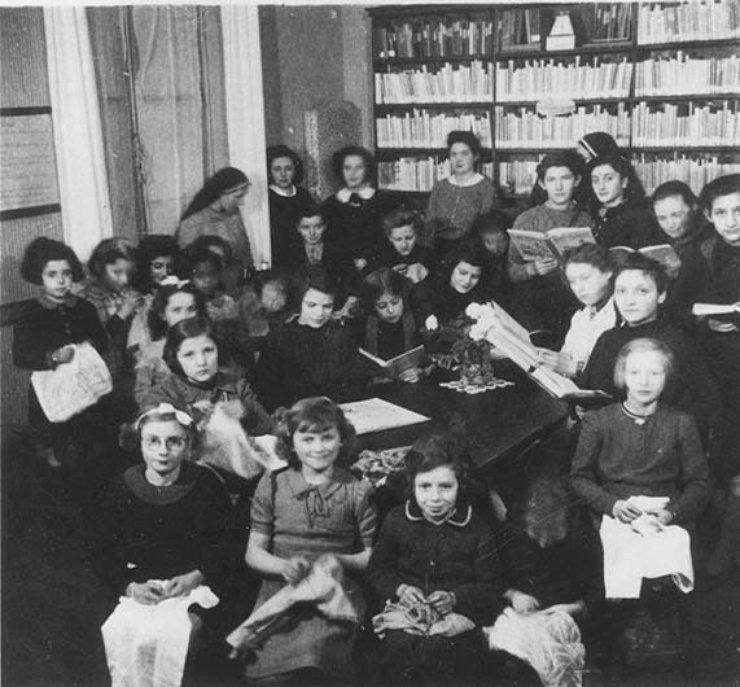 Jewish girls learning in the library of the center Du Marais, 1940. Credit: Yad Vashem
Jewish girls learning in the library of the center Du Marais, 1940. Credit: Yad Vashem -
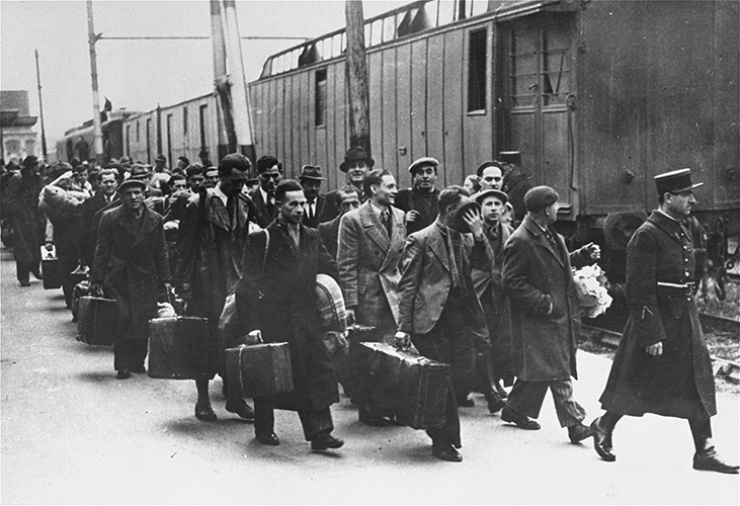 Foreign-born Jews arrive at the gare d'Austerlitz station during a deportation action from Paris, 1941. Credit: United States Holocaust Memorial Museum Sueddeutscher Verlag Bilderdienst, courtesy of Serge Klarsfeld (Beate Klarsfeld Foundation)
Foreign-born Jews arrive at the gare d'Austerlitz station during a deportation action from Paris, 1941. Credit: United States Holocaust Memorial Museum Sueddeutscher Verlag Bilderdienst, courtesy of Serge Klarsfeld (Beate Klarsfeld Foundation) -
 Deportation of 3,600 foreign-born Jews, May 14, 1941. The Jews were deported to the La Beaune Rolande and Pithiviers camps. Most of them were then sent to Auschwitz in June 1942. Credit: Yad Vashem
Deportation of 3,600 foreign-born Jews, May 14, 1941. The Jews were deported to the La Beaune Rolande and Pithiviers camps. Most of them were then sent to Auschwitz in June 1942. Credit: Yad Vashem -
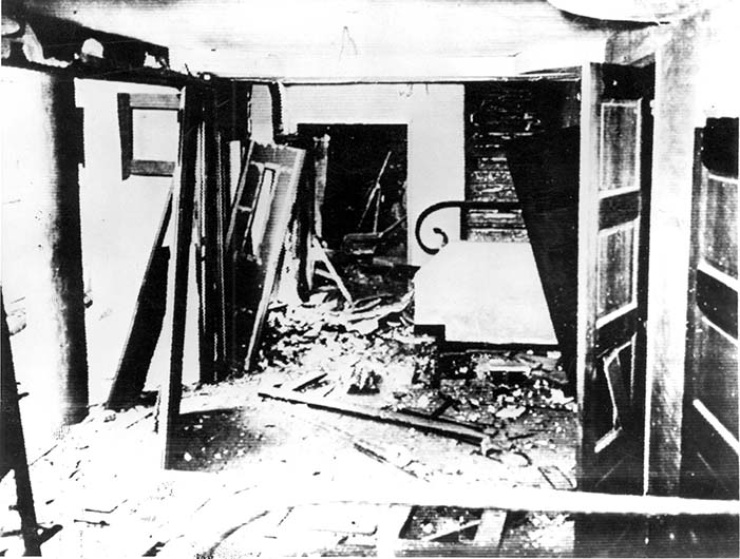 A bombed and destroyed synagogue, October 1941. Credit: Yad Vashem
A bombed and destroyed synagogue, October 1941. Credit: Yad Vashem
Destroyed Communities Memorial Slope
Paris: Survivors
We had about six to seven times a day bombers going up and down.
In 1936 my mother took me to Poland to visit my grandparents… and that was the last time that I saw them.
The sound of tens of thousands of mothers yelling ‘Liberez nos enfants!’ [Free our children!] is something that I’ve never been able to get out of my head.
